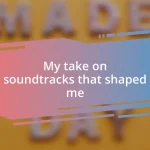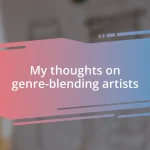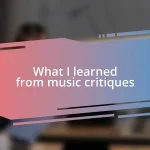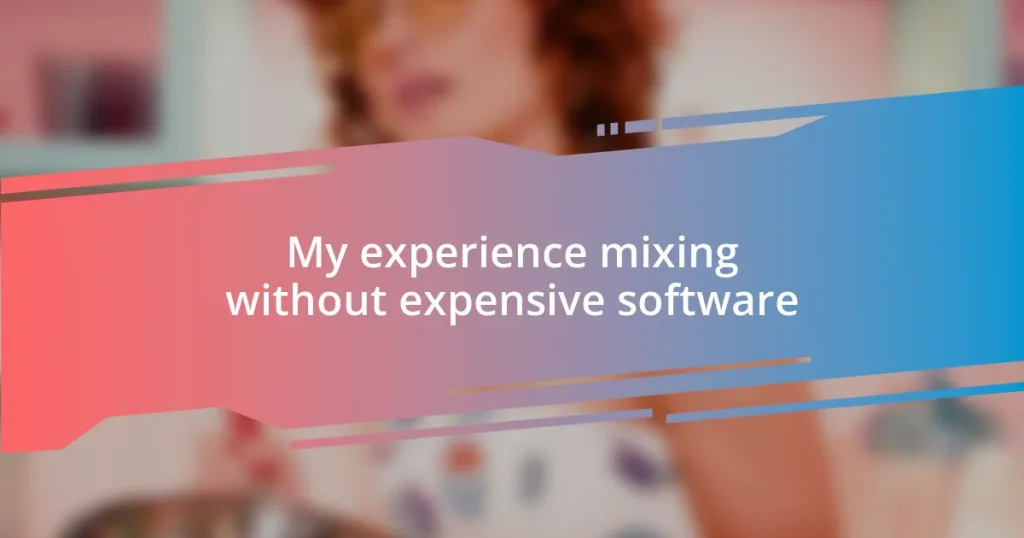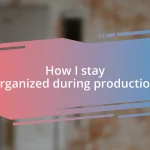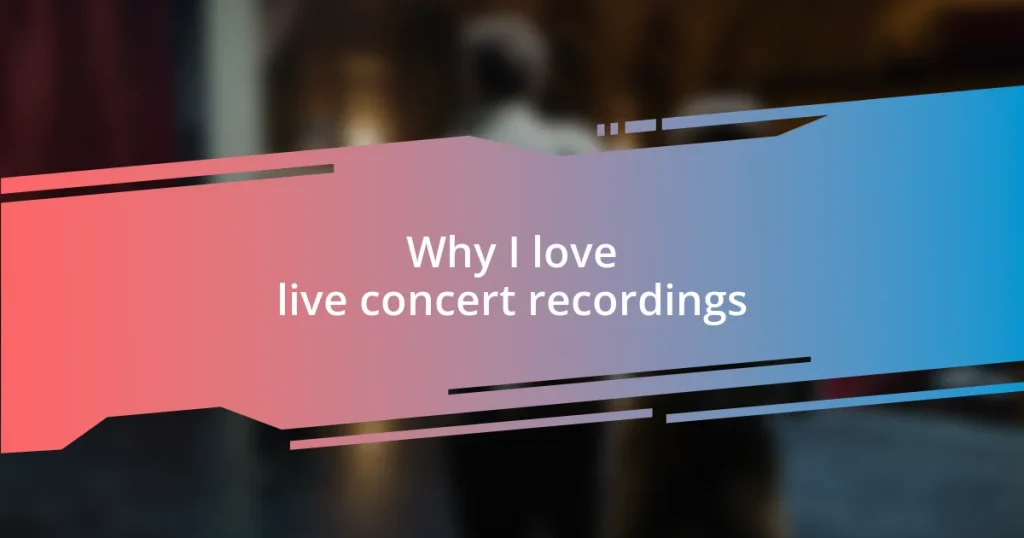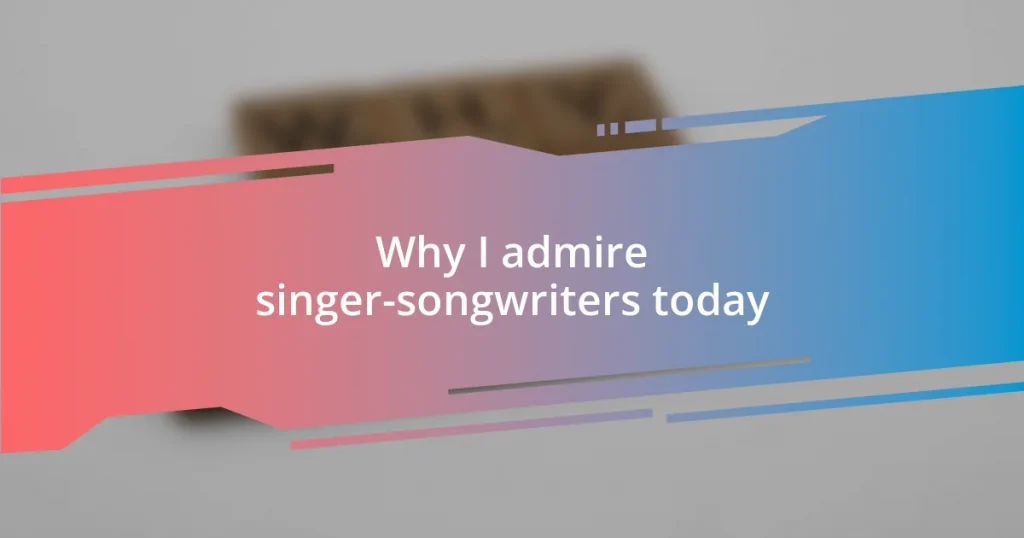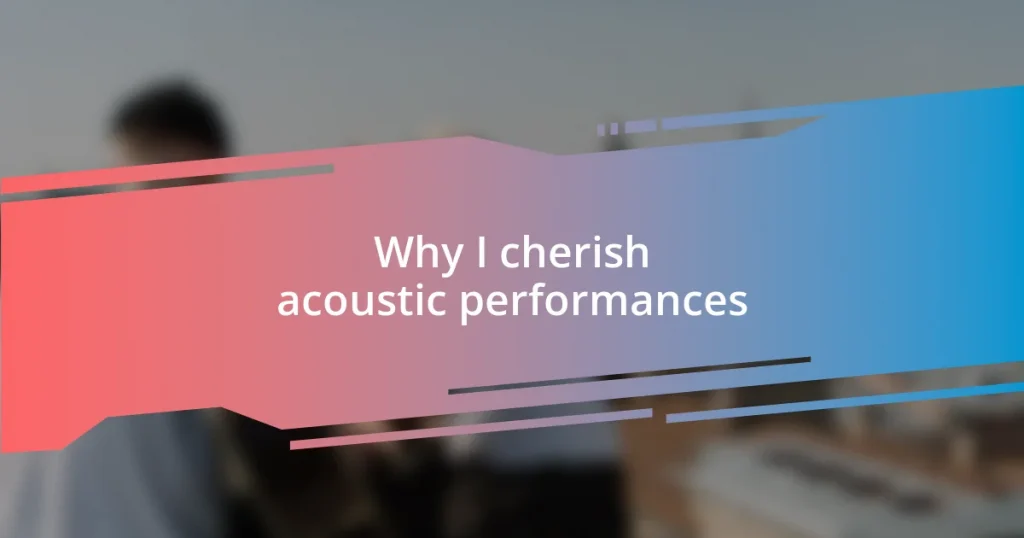Key takeaways:
- Budget mixing encourages creativity and exploration, proving that high-quality results can be achieved without expensive tools.
- Foundational techniques like EQing, dynamics control, and patience are essential for achieving balanced and professional-sounding mixes.
- Organizing projects, using reference tracks, and creating a conducive mixing environment significantly enhance workflow and final output quality.
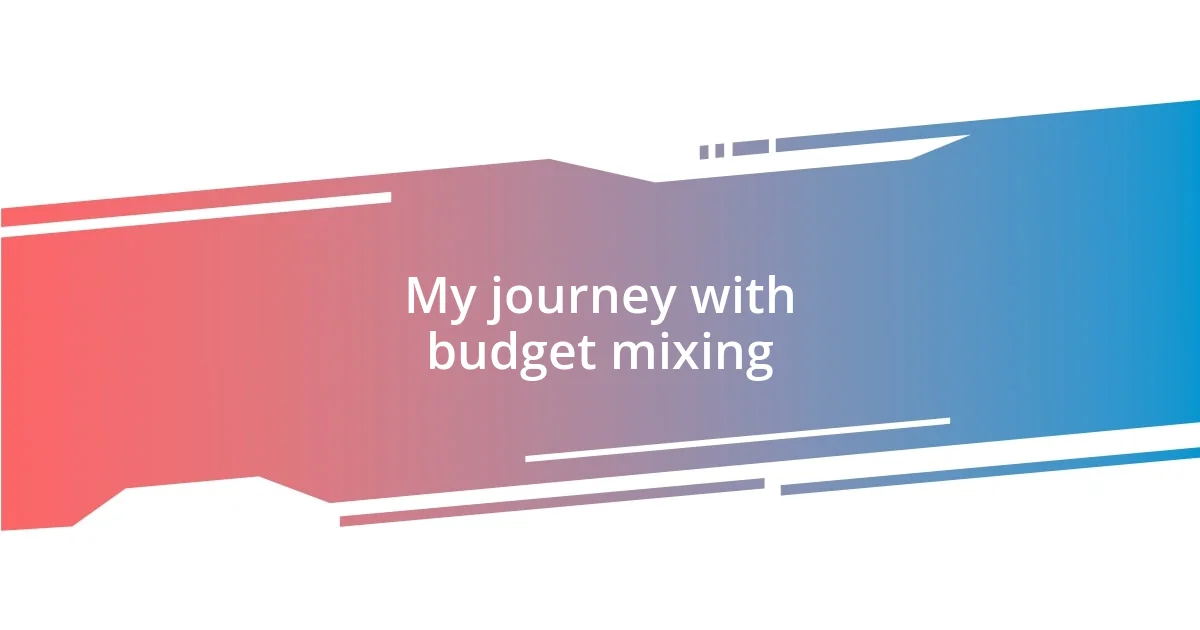
My journey with budget mixing
I remember the first time I sat down to mix a track on a budget. I had a simple audio interface and free software that I had downloaded, and I thought to myself, “Can I really make something that sounds good with this?” It felt daunting, but the thrill of experimenting with what little I had pushed me to get creative. I didn’t want to be limited by my tools, and that mindset opened up new possibilities I hadn’t considered before.
As I dove deeper into budget mixing, I started to discover the magic of layering sounds. One day, while working on a project, I layered some acoustic guitar with a digital synth, creating a texture I didn’t initially think was possible with free plugins. I’ll never forget that moment of surprise when I played it back; it felt like I unlocked a new level of artistry with just a few simple techniques. Have you ever had a moment where you realized your limitations could spark your greatest creativity?
Over time, I began to cultivate a unique sound that wasn’t just a product of my gear but a reflection of my artistic voice. Mixing without expensive software required me to lean into my intuition and really trust my ears. Every session became a playful challenge, pushing me to find what worked best within my means. In those moments, I learned that it’s not about how much you spend but how much heart you put into your art.
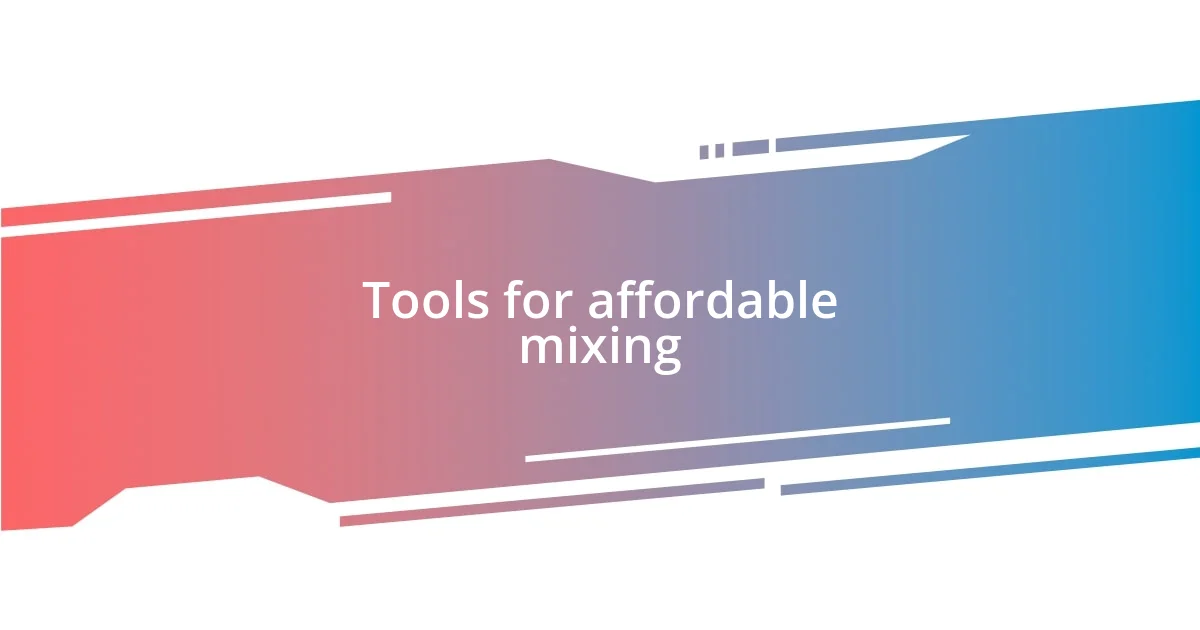
Tools for affordable mixing
When I first started mixing on a budget, I was amazed at the variety of affordable tools available. There’s a certain satisfaction in discovering that you don’t need to spend a fortune to achieve a professional sound. For me, it was about learning to navigate the options available to me, and that journey taught me the value of each tool I came across.
Here are some of my go-to affordable mixing tools:
– Audacity: This free, open-source software is great for basic mixing and audio editing.
– Cakewalk by BandLab: A powerful DAW that’s completely free, with features that rival paid software.
– Reaper: Instead of a costly upfront fee, you get a free trial and an affordable license, which is quite appealing.
– VST plugins: Many free or low-cost options exist, such as TDR Nova for dynamic EQ or Valhalla Supermassive for reverb.
– Soundtrap: An online tool that allows for collaborative mixing and mastering without hefty software costs.
I still remember the excitement of discovering these tools, like treasure hunting in a virtual world. Each piece of software or plugin opened my eyes to new creative avenues, helping me realize that innovation often flourishes within constraints. Sometimes, I’d mix on my laptop while sitting on my bed, feeling like I was in my own little universe. It affirmed my belief that whether you’re crafting beats or balancing vocals, the right tools enhance creativity rather than define it.
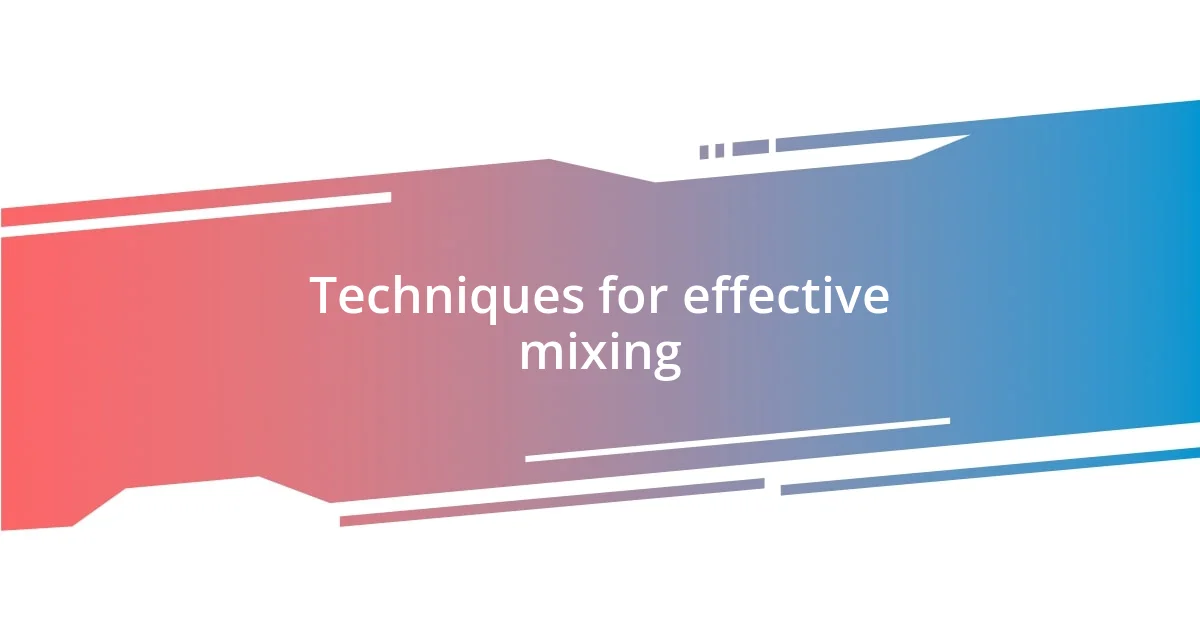
Techniques for effective mixing
Mixing effectively on a budget has taught me the importance of foundational techniques, such as EQing and panning. I remember being amazed by how a simple adjustment in frequency could clear up a mix and allow elements to sit nicely next to each other. It felt like watching a room come into focus; suddenly, everything felt balanced and harmonious. Have you tried tweaking EQ settings? It can be a game changer for clarity.
Another technique that has really resonated with me is the use of dynamics. I often found that using compression creatively not only tamed peaks but also added a little punch to my mixes. One time, I compressed a vocal track just right, and it brought the singer’s emotion to the forefront, making the entire song feel more alive. It’s the kind of moment that reminds me how powerful subtle adjustments can be, and it’s something anyone mixing can achieve.
Lastly, I’ve discovered the necessity of not rushing the mixing process. Once, I got too eager and rushed through a mix, thinking it would sound just as good. Boy, was I wrong! The end result lacked depth and cohesion. From that experience, I learned to step back and give my ears a break before finalizing any mix. Remind yourself, sometimes less is more.
| Technique | Benefits |
|---|---|
| EQing | Cleans up the mix by allowing sounds to coexist without clashing. |
| Dynamics Control | Adds punch and presence to key elements. |
| Pacing and Patience | Ensures depth and cohesion, leading to a more polished final product. |
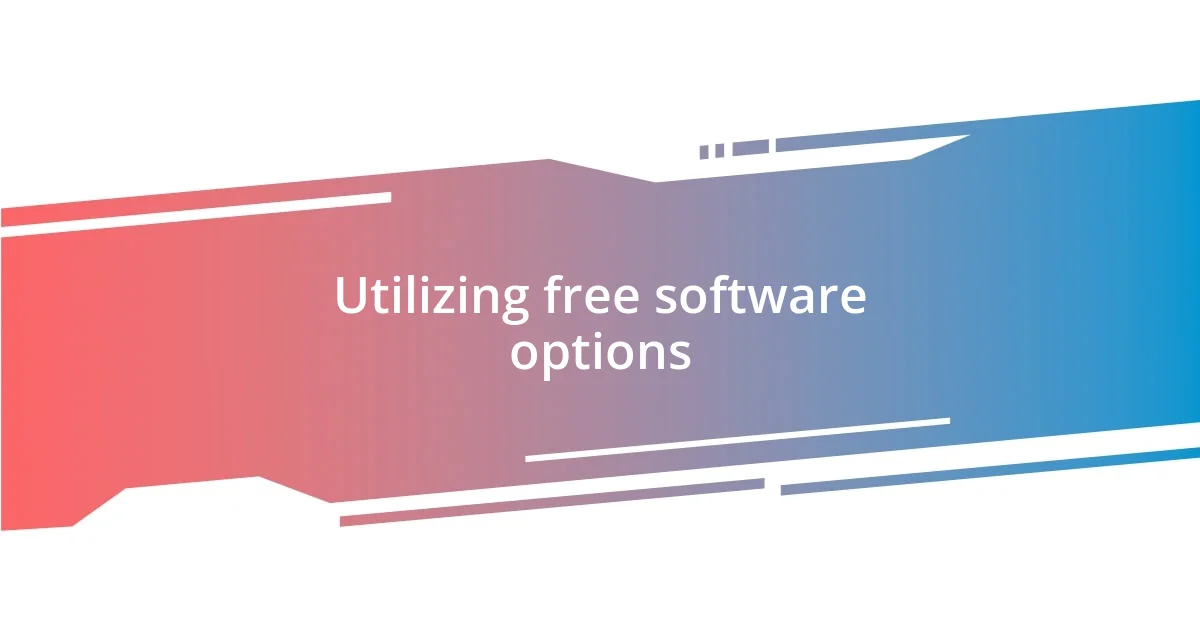
Utilizing free software options
Exploring free software options has been a game changer in my mixing journey. I remember my first experience with Audacity—what a revelation! I initially thought of mixing as a complex process reserved for those with high-end software. Yet, Audacity eased me into the world of audio editing, showing me that I could record and edit sound without leaving a dent in my wallet. Have you ever opened up software and felt like a world of possibilities was suddenly at your fingertips? That sense of discovery keeps fueling my passion.
Then there’s Cakewalk by BandLab. I was honestly stunned when I realized how feature-rich this DAW is. It’s almost like it was designed to bridge the gap between amateurs and professionals. I once spent an entire weekend experimenting with its MIDI capabilities and was thrilled by the depth of control I had. It felt like being in a candy shop, each feature offering a new way to express my creativity. Have you taken time to explore the features of free software like this? I encourage you to dive in—you might be surprised at what you can achieve.
Lastly, utilizing VST plugins, especially those that come free, has been a delightful surprise. I vividly recall discovering TDR Nova and how it transformed my approach to EQing. The fact that I could achieve professional results without spending anything was an absolute thrill. It was like finding a hidden gem that allowed me to sculpt my mixes into something polished and vibrant. Incorporating these plugins felt liberating; suddenly, my mixes began to have a depth I never thought possible on a budget. Have you considered how a simple plugin can elevate your mixing game? Trust me, it makes all the difference.
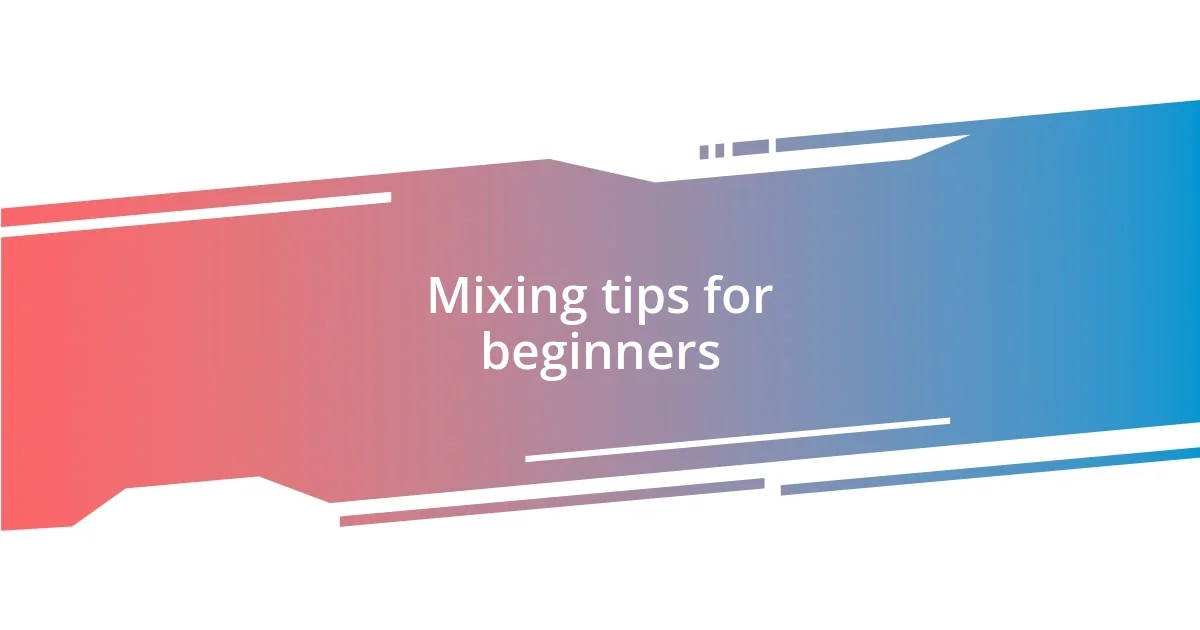
Mixing tips for beginners
One key tip for beginners is to start with a well-organized project. I’ve often found myself lost in a sea of tracks, and it was a mess! I realized that grouping similar instruments, labeling tracks clearly, and color-coding elements made it easier to navigate my mixes. It’s like having a clean workspace—suddenly, you can find everything you need without diving into chaos. Have you tried organizing your sessions this way? It can significantly enhance your workflow.
Another practical approach I’ve found beneficial is to use reference tracks. When I first started mixing, I wish I had known how valuable it was to have a track that encapsulated the sound I was aiming for. Listening to it alongside my mix helped me identify what I was missing and how I could elevate my own work. It became a kind of sonic compass, guiding me toward a more polished sound. Have you listened to your favorite songs while mixing? It’s like having a mentor right there with you.
Finally, don’t underestimate the power of a good set of headphones or monitors. I remember mixing on cheap earbuds once, and the end result sounded horrible on anything else. Investing in a decent pair helped me hear details I’d previously overlooked, allowing me to make better decisions. It made me wonder—how are you listening to your mixes? Quality audio gear doesn’t have to be expensive, but it can transform how you perceive sound, leading to much better results.
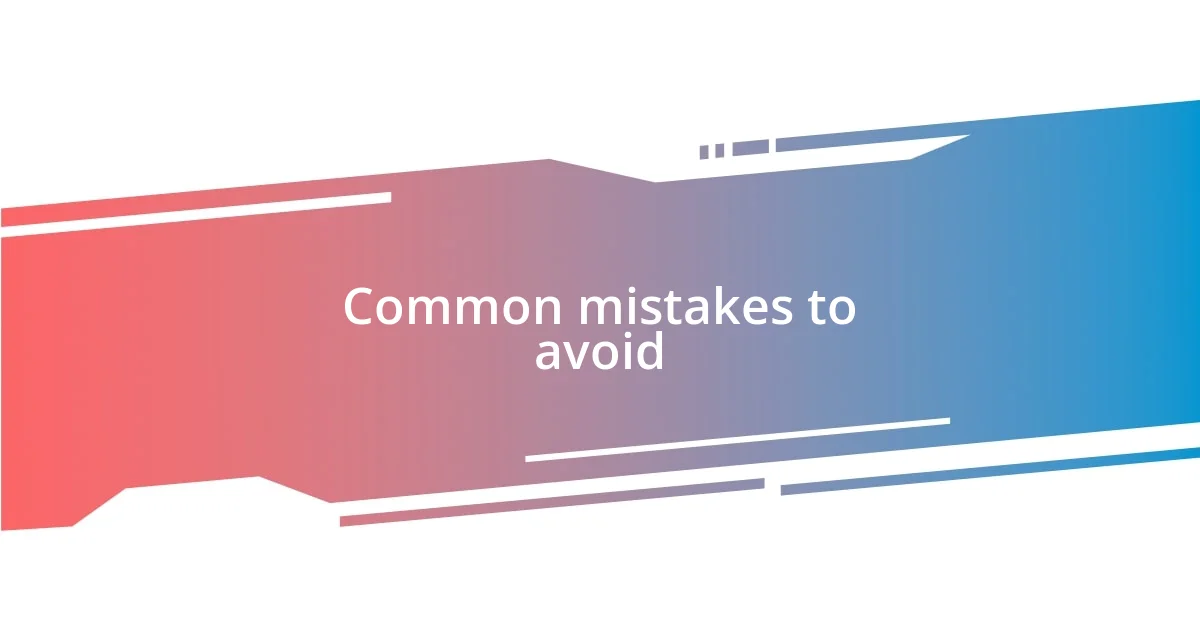
Common mistakes to avoid
When I first started mixing, a major mistake I made was overusing effects. I remember layering reverb and delay on nearly every track, thinking it would add depth. Instead, it muddied my sound, making everything indistinct. Have you ever noticed how sometimes less is more? Learning to use these effects sparingly transformed my mixing, allowing each element to stand out.
Another pitfall I encountered was neglecting the importance of gain staging. I used to ignore this step, letting my tracks peak and distort. The moment I learned to manage my levels, everything clicked into place. I realized that proper gain staging is like a solid foundation for a house—it supports everything built on top. Have you ever played back a mix that just sounds cramped? I learned the hard way that allowing headroom creates a cleaner, more vibrant sound.
Lastly, I often fell into the trap of mixing in a noisy environment. I can distinctly recall a time when I mixed a track late at night, with my TV running in the background. The next day, I was horrified at how unbalanced the mix sounded. I’ve since made it a point to find a quiet space with minimal distractions. Does your mixing environment help or hinder your process? Creating a focused atmosphere is crucial for clear listening and making confident decisions.







